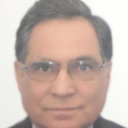Long-term anticonvulsant therapy in tuberculous meningitis--a four-year follow-up.
الكلمات الدالة
نبذة مختصرة
A treatment protocol for long-term anticonvulsant therapy (ACT) in children with tuberculous meningitis (TBM) has been followed depending upon clinical characteristics and EEG/CT scan findings suggestive of the underlying cause of convulsions. Sixty-three children which included all patients with focal seizures (FS), and those with generalized tonic and clonic seizures (GTCS), and tonic spasms (TS) manifesting more than once during hospitalization and/or associated with abnormal CT/EEG findings were given long-term ACT (Group A). Thirty-eight cases with GTCS before hospitalization, and/or not more than one seizure during first week of hospitalization and without any specific CT/EEG abnormalities (Group B) and 35 cases without any seizures (Group C) did not receive any ACT. Forty-four patients who were finally discharged on long-term ACT, were given phenobarbitone (57 per cent), phenytoin (23 per cent), and a combination of phenobarbitone+phenytoin (14 per cent), and phenobarbitone+sodium valproate (7 per cent). Follow-up was continued for 4 years with 93, 84 and 81 per cent attendance, respectively, in groups A, B and C. Some of the side-effects observed with anti-convulsant drugs included gingival hypertrophy in 11 out of 16 cases (69 per cent) on phenytoin, hyperkinetic behaviour in 3 out of 34 (9 per cent) cases on phenobarbitone, hypocalcaemia in 3 out of 44 cases (7 per cent), hypophosphataemia in 10 out of 44 cases (23 per cent) and increase in alkaline phosphatase in 14 out of 44 cases (32 per cent). CT scan of brain repeated in six cases with multiple tuberculomas showed marked improvement. While 4 out of 41 (10 per cent) cases in group A had recurrence of seizures in the follow-up, only 2 out of 28 cases (7 per cent) in group B presented with GTCS during first 3 months after discharge which was successfully controlled by long-term ACT in later part of the follow-up. Two out of 21 cases (10 per cent) in group C also presented with myoclonic seizures 3 and 5 months after discharge. There was no statistically significant difference in the recurrence/appearance of seizures in the three groups (P = > 0.05). Our results suggest that long-term ACT is not indicated in all cases of TBM with seizures. In view of the known side-effects of anticonvulsant drugs and danger of interaction with antitubercular drugs, it is mandatory to clinically evaluate the patients, identify the cause and restrict long-term ACT only to those cases who are likely to have some abnormal focus resulting in secondary epilepsy. All the cases with FS and some of the patients with GTCS and TS may need to be started on ACT. However, a close follow-up is necessary in all particularly in those for whom ACT has been withheld.


